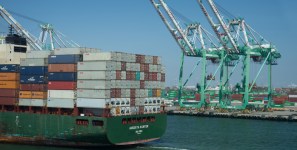Will FMC Regulate Terminal, Carrier Penalties?
The U.S. Federal Maritime Commission has signaled that will take up the regulation of demurrage and per-diem detention fees.
The starting point of such a process wold be the formation of an industry advisory committee. In a recently-released summary of four FMC hearings, the commission hinted that it may convene such a council to discuss port congestion.
Demurrage and per-diem fees are penalties shippers have to pay to marine terminal operators if their shipments are not picked up on time and to ocean carriers if their equipment is turned in late.
Industry groups have been lobbying the FMC for relief, saying shippers should not have to pay the charges if the delays are caused by port congestion.
The FMC report noted: “The lack of chassis availability emerged…as being by far the most pressing problem needing to be solved and, arguably, the biggest single cause of chronic congestion in many container terminals.”
The World Shipping Council, which represents most containers lines, opposes new regulation, saying port congestion is caused by several different factors.
“The commission is exploring whether it should establish such an advisory committee,” the FMC report said. A national council on intermodal efficiency, the commision said, could help resolve “issues of national importance that are affecting…the U.S. intermodal system.”
Such an advisory committee could suggest that the FMC regulate marine terminals’ and ocean carriers’ penalties. The council could also, said the FMC report, assess “ocean carrier, port, terminal, rail, drayage, and equipment provisioning systems and procedures and suggest how 21st century methods and technologies could be adopted to enhance container velocity through these systems.”





Leave a Reply